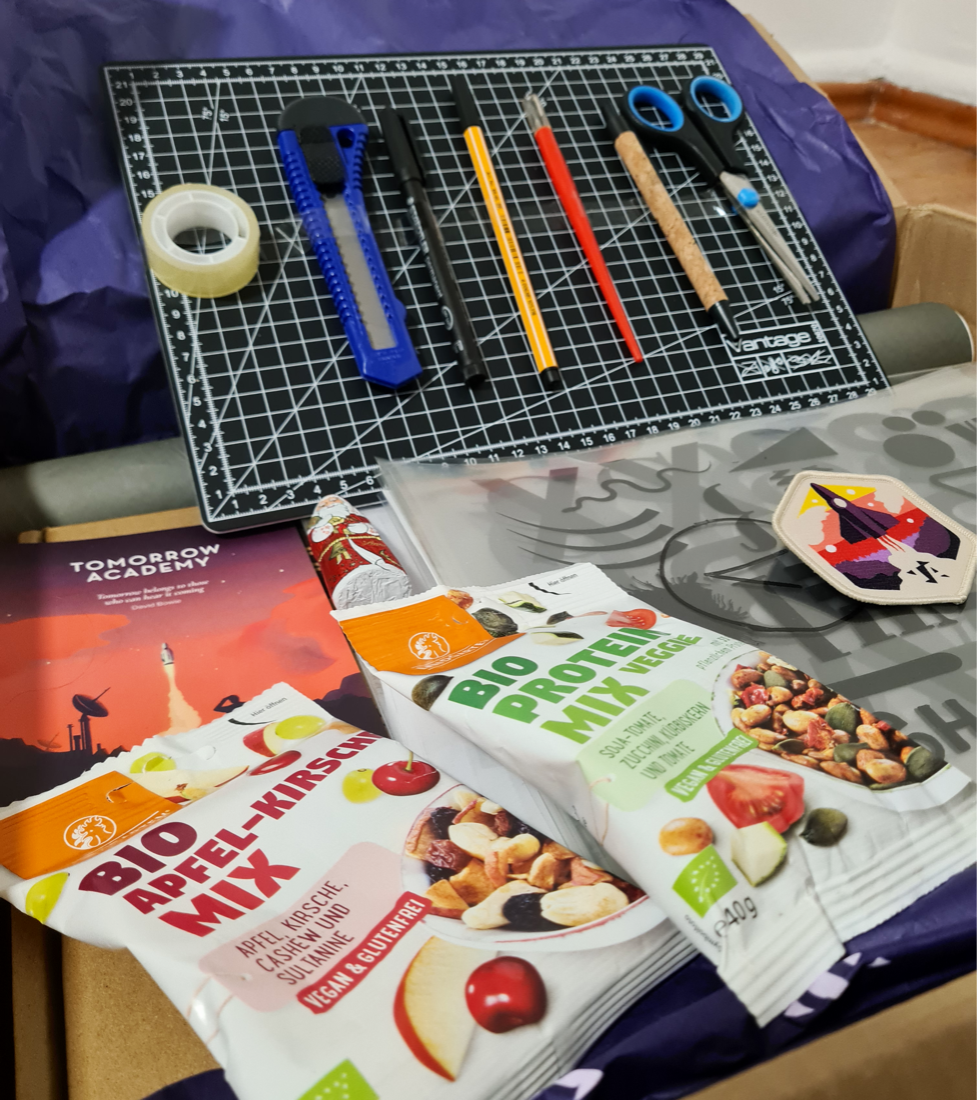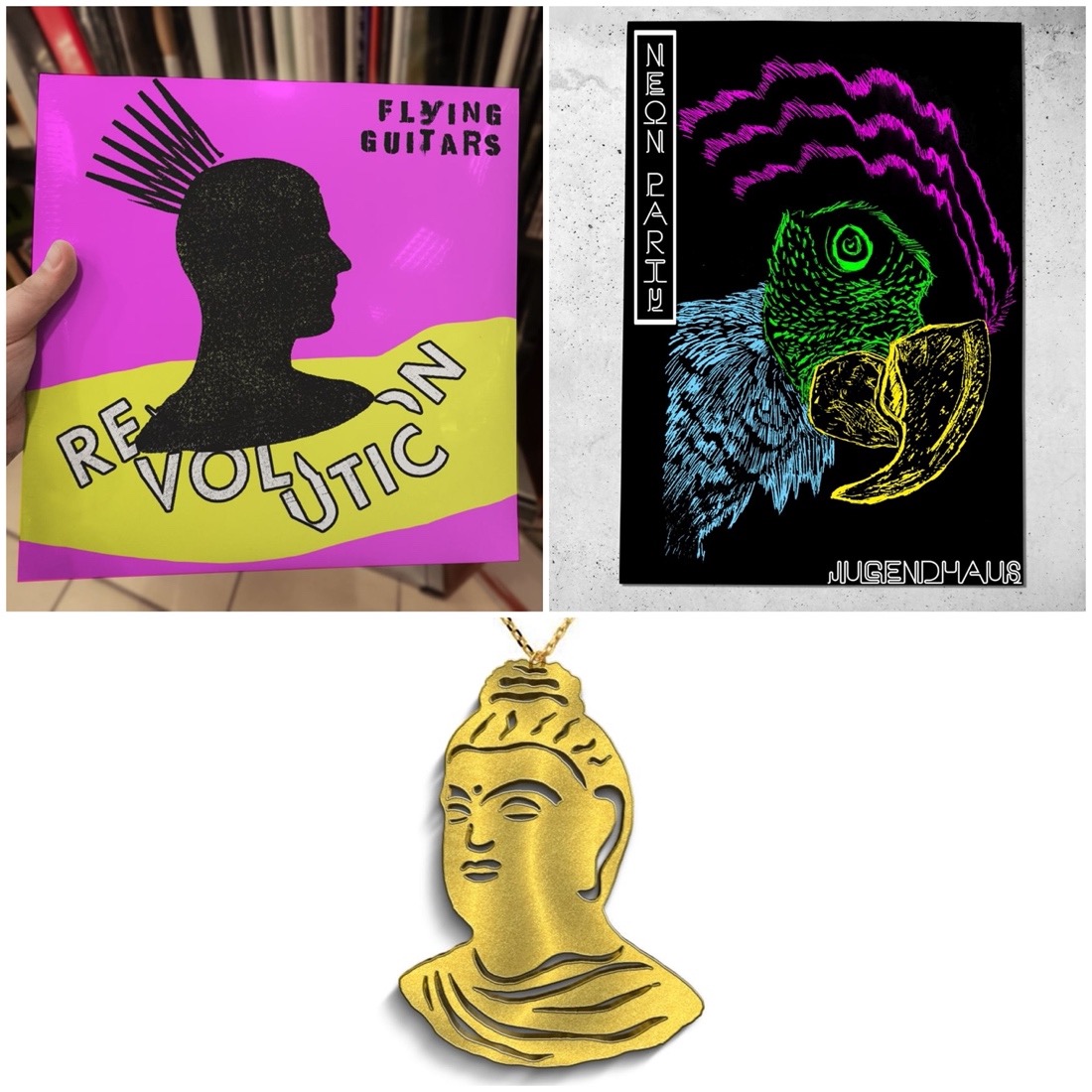On the 2nd and 3rd of December, I participated in the Tomorrow Academy’s “Graphic Design Innovation Lab” workshop. In this post, I would like to share and reflect on some of my impressions and thoughts about the workshop.
The speakers and the workshop
The twins and designers Thomas and Martin Poschauko combine several disciplines like liberal arts, design, creative research, and academic teaching. They take care of the graphic design, corporate identity, illustrations, and music design for several well-known companies including Sony Music, Kieler Woche, and Deutsche Post. Furthermore, they share their knowledge in their book “Nea Machina - die Kreativmaschine” and in different seminars and lectures about creativity.
For me, the workshop started a few days before the actual date. I received a big package with everything I needed for the workshop, and some great little gifts, such as snacks and drinks.
During the workshop, the Poschaukos succeeded in explaining and communicating their complex technical setup and innovative method, which was developed together with Adidas, in an understandable way that you could also implement at home. After all of this valuable input, I had the chance to try it out and experiment with it myself. For the first time in ages, I had a pair of scissors and tape in my hands to create something artistic.
Before the workshop, it was said: “We believe: Ideas arise in the simplest way while making (…) The goal: The creative process should become more perceptible, faster, and more intuitive. And is suddenly really fun again!” And they were right! It was a lot of fun to play around with everything. Suddenly ideas and solutions to real problems appeared in my head without me actively searching for them. Here are some of my final results that came out of it:
During the workshop, but also afterwards, I felt much more creative. I had a great desire to run to my desk and try out more things. That’s when I started to wonder - why was this happening all of a sudden? For a long time, this thought lingered in my mind. That’s why I would like to use this post to explore this in more detail.
What is creativity?
Creativity is something we all know. Maybe one or two of you have already caught yourself thinking: “I’m not that creative! And have no artistic talent. I can’t simply create something!” But is that true? What does creativity actually mean?
Creativity is not just about painting beautiful pictures, writing exciting novels, or making great music. It manifests itself in thinking, acting, and planning, which are elementary steps for human development. Being creative means changing perspectives or taking different paths. Thus, creativity can basically be compared to problem-solving.
Think back to your childhood or observe this in your children: Children are bursting with creativity. They explore everything, try things out, look at them in different ways, combine and interpret them in a thousand ways. A toilet paper roll is used to build a spaceship, a chestnut becomes a doll, and a fork turns into a catapult.
Where is this childish creativity now?
In a 1960s study, George Land found that 98% of all children are at most creative by the age of 5. Unfortunately, this rate decreases with increasing age. Among the 10-year-olds, only 30%, among the 15-year-olds 12%, and with an average age of 31, only 2% were creative geniuses. In his TED Talk, Land gives some interesting context and background information on this topic.
Can we reawaken the five-year-old in us?
The results of this study may be shocking, but don’t worry: Land and many other scientists agree that creativity is something we can learn. You can think of creativity as a muscle. It needs frequent stimulation to grow and loses strength if not used.
“Creativity is just connecting things. When you ask creative people how they did something, they feel a little guilty because they didn’t really do it, they just saw something. It seemed obvious to them after a while.” - Steve Jobs
This is also what the speakers at the “Graphic Design Innovation Lab” workshop conveyed. Their core message is that basically everything can be an inspiration. To do this, you only have to learn to leave your habitual ways of seeing things behind and be open to everything new. But this is a process that takes time and does not happen overnight. However, once you get used to it, your sensitivity to your environment increases every day. The Poschauko brothers have internalized this view so much that everything around them can be an inspiration for their innovative designs.
How is this supposed to work?
By writing down what comes to your mind and collecting ideas this way, you open yourself to inspiration. However, it is important that we do not evaluate these things immediately. By doing so, you return to an analytical way of thinking and banish your creativity again. Clearly, in today’s work environment, we can’t spend all of our time mindlessly testing things out and playing around. The key here is to find a balance. If you always allow yourself small moments to be creative, not only will your work benefit but also your well-being.
To wrap up this topic, a little exercise for your creativity: Let’s go back to the catapult, which used to be a fork. Try to think of 20 more possible ways to use the fork. Can you imagine that this fork could even be the inspiration and model for a modern logo design?
Summary
For me, participating in the workshop was like a little treasure chest full of useful tools, inspiration, and new things. The speakers were friendly, professional, and always very helpful. Their passion and creativity was contagious. Throughout the workshop, there was a good balance between new input, self-experimentation, breaks, and feedback. Especially because of the small group of eight people, everyone was able to contribute something and receive sufficient feedback. All in all, the two days felt like a little holiday for my heart and soul, where I also learned a lot for my job as a Frontend Designer and my daily life.



